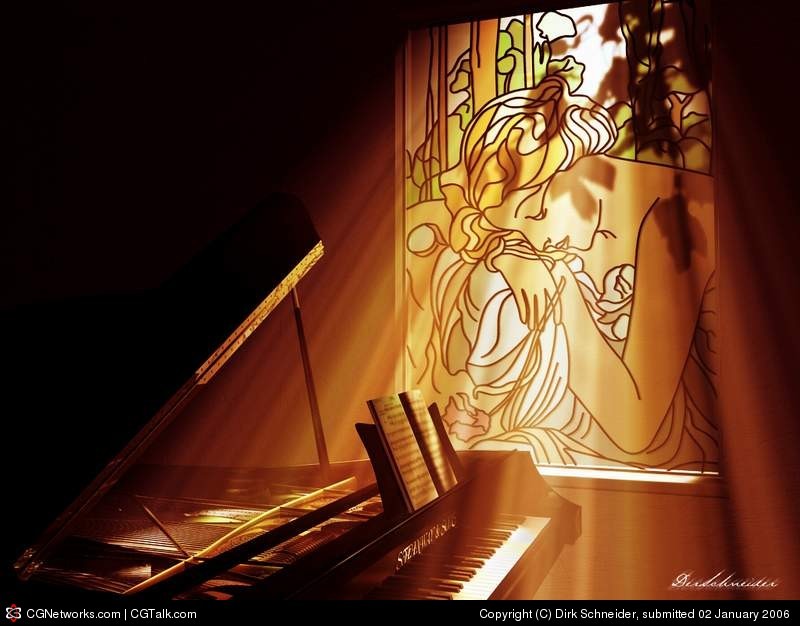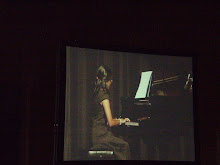Bharata Natyam comes from the words Bhava (Expression), Raga (Music), Tala (Rhythm) and Natya (Classic Indian Musical Theatre). Today, it is one of the most popular and widely performed dance styles and is practiced by many dancers all over the world. The Encyclopædia Britannica states that Bharata Natyam is Sanskrit for Bharata’s dancing.
Traditional roots
Surviving texts of the golden age of Tamil literature and poetry known during the Sangam Age such as the Tolkappiyam (தொல்கப்பியம்), as well as the later Silappadikaram (சிலப்பதிகரம்), testify to a variety of dance traditions of Koothu which flourished in these times. The latter work is of particular importance, since one of its main characters, the courtesan Madhavi, is a highly accomplished dancer. The Silappadikaram is a mine of information of ancient Tamil culture and society, in which the arts of music and dance were highly developed and played a major role . In ancient times it was performed as "dasiattam" by mandir (Hindu temple) Devadasis. Many of the ancient sculptures in Hindu temples are based on Bharata Natyam dance postures karanas. In fact, it is the celestial dancers,aspara's which are depicted in many scriptures dancing the heavenly version of what is known on earth as Bharata Natyam. In the most essential sense, a Hindu deity is a revered royal guest in his temple/abode, to be offered the "sixteen hospitalities" - among which are music and dance, pleasing to the senses. Thus, many Hindu temples traditionally maintained complements of trained musicians and dancers, as did Indian rulers.
In Kali Yuga, the center of most arts in India is Bhakti (devotion) and therefore, Bharata Natyam as a dance form and carnatic music set to it are deeply grounded in Bhakti. Bharata Natyam, it is said, is the embodiment of music in visual form, a ceremony, and an act of devotion. Dance and music are inseparable forms; only with Sangeetam (words or syllables set to raga or melody) can dance be conceptualized. Bharata Natyam has three distinct elements to it: Nritta (rhythmic dance movements), Natya (mime, or dance with a dramatic aspect), and Nritya (combination of Nritta and Natya).
 The Tamil country especially Tanjore, has always been the seat and centre of learning and culture. It was the famous Tanjore quartet of Chinnayya, Ponniah, Sivanandam and Vadivelu of the Tanjore Court during the Marathi King Saraboji’s time (1798–1824) which made a rich contribution to music and Bharata Natyam and also completed the process of re-editing the Bharathanatyam programme into its present shape with its various forms like the Alaripu, Jathi-Svaram, Varanam, Sadanam, Padam and Tillana. The descendants of these four brothers formed the original stock of Nattuvanars or dance teachers of Bharata Natyam in Tanjore. Originally, they formed a community by themselves and most of them were Saivite non-Brahmins.
The Tamil country especially Tanjore, has always been the seat and centre of learning and culture. It was the famous Tanjore quartet of Chinnayya, Ponniah, Sivanandam and Vadivelu of the Tanjore Court during the Marathi King Saraboji’s time (1798–1824) which made a rich contribution to music and Bharata Natyam and also completed the process of re-editing the Bharathanatyam programme into its present shape with its various forms like the Alaripu, Jathi-Svaram, Varanam, Sadanam, Padam and Tillana. The descendants of these four brothers formed the original stock of Nattuvanars or dance teachers of Bharata Natyam in Tanjore. Originally, they formed a community by themselves and most of them were Saivite non-Brahmins.It is believed that Bharata Natyam is mainly a renewal of Cathir, the ancient art of temple dancers.This dance form denotes various 19th and 20th century reconstructions of Cathir, the art of temple dancers from ancient dance forms.
Spiritual symbolism
Bharata Natyam is the manifestation of the ancient idea of the celebration of the eternal universe through the celebration of the beauty of the material body. Some Bharata Natyam techniques can be traced back to the Kaisiki style. The Natya(I.44) reads, "... I have seen the Kaisiki style during the dance of the blue-throated lord (Shiva). It consists of elaborate gestures ("Mridu Angaharas", movements of limbs), sentiments (Rasas), emotional states (Bhavas). Actions (Kriyas) are its soul. The costume should be charmingly beautiful and love (Sringara) is its foundation. It cannot be adequately portrayed by men. Except for women, none can practise it properly".
 Apart from the Kaisiki style, Bharata Natyam imbibed some others. These reflect other yogis spiritual revelations, such as the vision of two sages, Vyagrapada and Pathanjali in Chidambaram. In Hindu mythology the whole universe is the dance of the Supreme Dancer, Nataraja, a name for Lord Shiva, the Hindu ascetic yogi and divine purveyor of destruction of evil. The symbolism of the dance of Shiva (in the form of Nataraja) is represented by the attitude called "Ananda Tandavam". Also known as the cosmic dancer, he is here the embodiment and manifestation of the eternal energy in five activities (panca-kriya): creation, pouring forth, unfolding; maintenance or duration (sthiti); destruction or taking back (smhara); concealing, veiling, hiding the transcendental essence behind the garb of apparations (tirobhava); and favoring, bestowing grace through a manifestation that accepts the devotee (anugraha). Shiva is depicted dancing on the dwarfish body of the demon Apasmara purusa, "forgetfulness, loss of memory" called in Tamil Muyalaka who represents ignorance, the destruction of which brings enlightenment, true wisdom, and release from the bondage of existences.
Apart from the Kaisiki style, Bharata Natyam imbibed some others. These reflect other yogis spiritual revelations, such as the vision of two sages, Vyagrapada and Pathanjali in Chidambaram. In Hindu mythology the whole universe is the dance of the Supreme Dancer, Nataraja, a name for Lord Shiva, the Hindu ascetic yogi and divine purveyor of destruction of evil. The symbolism of the dance of Shiva (in the form of Nataraja) is represented by the attitude called "Ananda Tandavam". Also known as the cosmic dancer, he is here the embodiment and manifestation of the eternal energy in five activities (panca-kriya): creation, pouring forth, unfolding; maintenance or duration (sthiti); destruction or taking back (smhara); concealing, veiling, hiding the transcendental essence behind the garb of apparations (tirobhava); and favoring, bestowing grace through a manifestation that accepts the devotee (anugraha). Shiva is depicted dancing on the dwarfish body of the demon Apasmara purusa, "forgetfulness, loss of memory" called in Tamil Muyalaka who represents ignorance, the destruction of which brings enlightenment, true wisdom, and release from the bondage of existences.Technique
This Bharata Natyam dancer's right hand is in the Katakamukha Hasta, the 3 joined fingers symbolizing the sacred syllable Aum. The left hand's fingers are in Alapadma Hasta, the rotating lotus of spiritual light. The eyes are directed towards the Supreme Lord. The left leg is lifted, symbolizing the swift ascent of the consciousness in one step from the Earth to the Heaven.
Includes
- Abhinaya or Natya - dramatic art of story-telling in Bharata Natyam
- Nritta - pure dance movements, as a medium of visual depiction of rhythms
- Nritya combination of abhinaya and nritta
Karanas
Karanas are the 108 key transitional movements that punctuate Bharata Natyam and other classical Indian dances. Most of these 108 Karanas have a central, static pose as a base, i.e. the dancer is usually supposed to stop and maintain it for a very brief duration (0.5 sec).
Hastas
See also: List of mudras
A distinctive feature of Bharata Natyam Dance is the use of expressive hand gestures as a way of communication. Hastas refers to the varieties of hand symbols that a dancer can use. Many of these hand gestures are well known. For example, Anjali is often used as a salutation when a person greets another person. The Tamil text Koothanool contains descriptions of over 300 hastas and mudras.
There are two types of Hastas : Asamyukta and Samyukta (single and combined, respectively). Abhinayadarpanam describes 28 Asamyukta Hastas (Pataka, Tripataka, Ardhapataka, Karktarimukha, Mayuryakyo, Ardhachandrashya, Arala, Shukatundako, Mhushtishya, Shikharakhachya,Khapitya, Khatakamukhyo, Suchi, Chandrakala, Padmakosha, Sarpashiras,etc.) and 24 Samyukta Hastas and their usage viniyoga, although Natya Shastra mentions many more, and the usages stated in Abhinavabharati differ considerably from those of Abhinayadarpanam, which is a relatively recent text.
The gestures used in nritta are called nritta hastas, and are described in detail as part of karanas in Natya Shastra. Few Bharata Natyam schools use the full range of these. Many hastas can be used in more than one way, depending on the song accompanying the dance, and what the dancer is trying to convey to the audience.
Adavus
See also: List of Adavus
The basic unit in Bharata Natyam dance composition is the 'Adavu', (derived from 'adu', Telegu for 'beat of the foot'). Adavus are a relatively recent desi component in Bharata Natyam. The dance steps were first categorized into adavus by Tanjore Quartet. The execution of adavus varies greatly from style to style. Most schools recognize 108 principal adavus, while some styles include over 150 adavus. Few professional dancers use more than 60. A combination of adavus is called jathis, which make up the Nritta passages in a Bharata Natyam performance. Unlike the margi Nritta composed of the Karanas, the adavus do not convey any rasa.
Ten main adavus are:
- Tatta Adavu
- Natta Adavu
- Visharu Adavu
- Tatti Metti Adavu
- Teermanam Adavu
- Sarikal Adavu
- Kuditta Metta Adavu
- Sutral (Murka) Adavu
- Jaati Adavu
- Mandi Adavu
Bhedas and eye movements
Bharata Natyam technique includes many other elements, such as elaborate neck and eye movements. While Natya Shastra contains the largest number of the movements, and the most detailed descriptions, Abhinaya Darpanam, for instance, has defined only 9 head movements, 4 neck movement and 8 eye movements (compared with 36 of Natya Shastra) which are used extensively throughout the dance.
Head Movements (Shiro bhedas): Sama, Udhvahita, Adhomukha, Alolita,Dhutam, Kampitam, Paravruttam, Utkshiptam and Parivahitam.
Neck Movements (Griva bhedas): Sundari, Tirashchina, Parivartita, Prakampita
Eye Movements (Drishti bhedas): Sama, Alolita, Sachi, Pralokita, Nimilite, Ullokita, Anuvritta, Avalokita [who looks down]
Items
Thattukuzhi and mannai are baton and plank used to keep rhythm.
A Bharata Natyam performance lasts about two hours,[10] and includes six or more of the following parts:
- Allarippu - A presentation of the Tala punctuated by simple syllables spoken by the dancer. This really is sort of an invocation to the gods to bless the performance.
- Kautuvam - Ancient temple dance item performed in the beginning of the recital, containing rhythmic syllables sung for jathis.
- Ganapati Vandana - A traditional opening prayer to the Hindu god Ganesh, who removes obstacles. See also Pushpanjali
- Jatiswaram - An abstract dance where the drums set the beat. Here the dancer displays her versatility in elaborate footwork and graceful movements of the body.
- Shabdam - The dancing is accompanied by a poem or song with a devotional or amorous theme.
- Varnam - The center piece of the performance. It is the longest section of the dance punctuated with the most complex and difficult movements. Positions of the hands and body tell a story, usually of love and the longing for the lover.
- Padam - Probably the most lyrical section where the dancer "speaks" of some aspect of love: devotion to the Supreme Being; or of love of mother for child; or the love of lovers separated and reunited.
- Stuti - Hymn in praise of a deity that may contain a feigned mockery, etc. See also Stotra
- Koothu - Item containing a lot of dramatic elements.
- Javali - Javalis are relatively new, pure abhinaya types of compositions of light and pleasing nature. Like Padams the underlying theme of Javalis is Sringara Rasa depicting the Nayaka-Nayaki bhava.
- Thillana - The final section is a pure dance (nritta) when the virtuosity of the music is reflected in the complex footwork and captivating poses of the dancer.





No comments:
Post a Comment